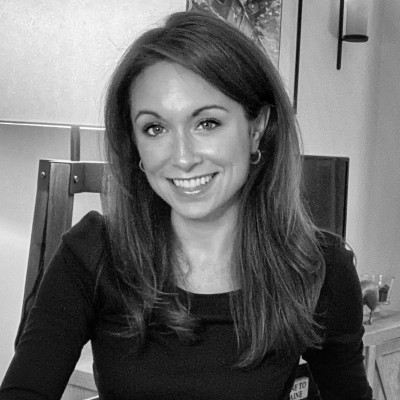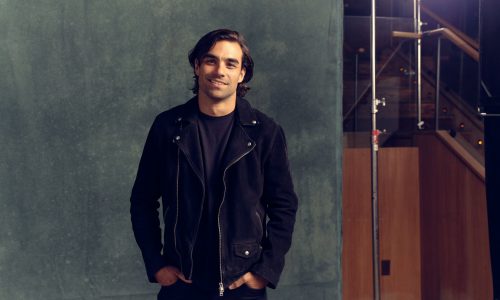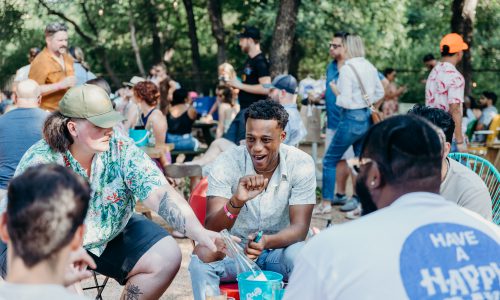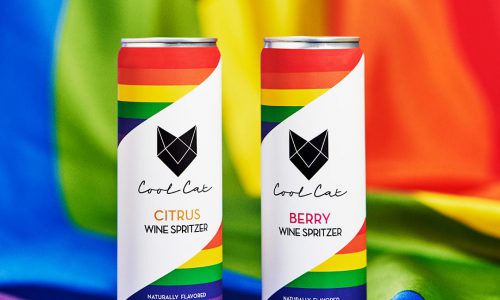Founders Michael Houlihan and Bonnie Harvey didn’t set out with the intention of creating the world’s largest wine brand. At the time of Barefoot Wine’s founding in 1985, they both lacked the money and the industry knowledge necessary to launch a brand of any kind. Instead, they relied on innovative, entrepreneurial tactics that would later prove to be more than successful.
Their unconventional approach to brand building led them to disrupt the wine category with a unique perspective on retail; leverage an alternative to commercial advertising; and forge partnerships with 25,000 retail stores across 50 states and 28 countries.
Read on to discover the story of Barefoot from its founders — the things they wish they knew then; how they approached hiring; and why they believe that a brand’s reputation is the key to its success.
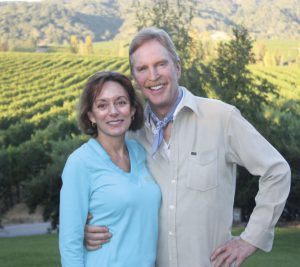 ForceBrands: Let’s start from the beginning — what inspired you to create Barefoot and did you set out with the intention of creating the world’s largest wine brand?
ForceBrands: Let’s start from the beginning — what inspired you to create Barefoot and did you set out with the intention of creating the world’s largest wine brand?
Michael and Bonnie: You often hear people say to follow your passion. Well, we followed our opportunity, passionately! Bonnie had a client who was a grape grower in the Sonoma County wine country in California. The grower had been paid for his grapes for three years. She discovered this in the paperwork and realized the grower had no contract was trying to collect on a handshake. There were records of the transaction, however. Bonnie asked Michael, her new boyfriend who was a business consultant, to pay a visit to the winery that owed the funds to the grower. But by the time he got there, they had declared bankruptcy. However, he was still able to negotiate wine in bulk and bottling services in lieu of the funds.
This trade — wine for debt — was how Barefoot Wine got started. So now we had turned debt into assets, but we had to develop a brand, a package, a marketing program, and basically, create a wine company to turn the bulk wine and bottling services into cash to pay the grower. But the grower didn’t want to have anything to do with running a wine marketing company. We took on the debt and the grower felt that he was more likely to get paid if we owed him the money than the bankrupt winery. The grower was eventually paid back, and Barefoot Wine was born!
FB: When was your ‘ah-ha’ moment when you knew you were truly onto something big?
M&B: We knew we were onto something big after a few years when large chain stores in California began to carry Barefoot. We noticed an ever-increasing volume with more and more chain stores jumping on board. We knew that we had done something right when people began coming to us and saying, “I don’t like wine, but I love Barefoot!”

FB: A lot has changed in the wine industry since you launched Barefoot in 1985. How has Barefoot continued to innovate and remain relevant? And what are some of the challenges the brand has faced in continuing to do so?
M&B: We can’t speak for the current brand owners, but from the time we started Barefoot until it became an acquisition target, we faced the same challenges that startups face today. We had to find our true market. We had to access that market. We had to develop and hold an attractive price point. We were undercapitalized and still had to get the word out about our product. We relied on worthy cause marketing instead of commercial advertising to do this. We also had to understand how to hire, train, compensate, engage, and empower our people. During the time we developed the brand, we were up against an ever-changing backdrop and megatrend that continues today in the industry — the consolidation of production, distribution, and retail was changing the landscape and preventing many new startups from accessing the marketplace.
FB: What advice do you have for entrepreneurs looking to launch their own successful wine brand today?
M&B: Whether it’s a wine business or a widget business, it is a CPG brand. As such, it has to show a certain amount of volume in order to justify precious shelf space at retail. Making that volume happen is the biggest challenge new producers face. They can’t achieve volume unless they can maintain shelf. You can’t maintain shelf unless you understand all the reasons why your product may not get reordered, scanned, shipped, priced right, coded right, or sent to the shelf.
In order to understand the distribution process, and what is required of you as a CPG brand builder, we recommend you start small and make your mistakes in a small place.
We like to say that when you’re new, never sell further from your house than you can drive and apologize and return in one day. Everybody knows the costs of goods, but do they understand the cost of sales? This is the biggest mistake CPG brand builders make. They grossly underestimate the cost of sales. It costs money to fly around the country and check your product in retail stores. It costs money to develop relationships with people up and down the distribution chain. It costs money to put your products on special display. It costs money to develop and deploy advertising materials. It costs money to pay for a representative who will watch your products and how they are being handled in other territories.
Once you sell your CPG product for the first time, you find out what kind of customer service is required. These are the cost of sales. You don’t want to expand too quickly and you certainly don’t want to expand at all until you understand these costs. It’s better sometimes to not be in a particular store, chain, or box outlet than to be there and get discontinued. You can’t get discontinued until you’re there.
When you start small, you can focus on the challenges of distribution and retail so you get the reputation of being a “hot mover,” even in a small territory. That reputation will help you when you expand.
You have to knock the ball right out of the park your first time at the plate. If you hit a foul ball, and your product doesn’t move, your competition will be sure to tell the next buyer that your product is a slow mover and a nonstarter. Reputation is key. Develop a good one from day one.
FB: Here at ForceBrands, we’re people for a HIRE purpose – in other words, we believe in the power of a great team. What are some of the most valuable team building lessons you’ve learned from launching Barefoot?
M&B: We learned how to develop and utilize a philosophy about human resources that looked at our people as more than just laborers. We saw them as partners. We practiced just the opposite of ‘need to know.’ We practiced ‘know the need.’ When we had problems in the marketplace, we shared them with our people, even the receptionist. Even though they were not in marketing, they all had an interest in seeing the business succeed and they were thrilled that we thought enough about them to ask them their opinion. We also gave them permission to come up with outlandish ideas because we knew that brainstorming usually starts there.
Another thing we learned is to ‘overkill’ orientation. Instead of limiting orientation to showing new hires the coffee room, the bathroom, and the ‘go-to’ person, we oriented our people to the bigger picture and how our company and our product figured into the bigger picture. We did this with infographics. One, which we called “the money map,” graphically showed every step the money made on its trip to their paycheck, bonus, and benefits. It started with the consumer paying for the product. Then it went to the retailer who took the money to pay off his/her own overhead. Whatever they had left over for profit, they then bought our product. Then it showed our distributor delivering our product to the retailer and taking the money to pay his/her overhead while having some left over for profit and then buying our product from us.
It showed how we took the money, paid suppliers, paid our overhead, and then put the remaining sum toward employee paychecks. So our people knew from day one where the money came from. They also knew how they fit in in the scheme of things, and how they could affect an increase in the overall profit.
FB: How did you approach hiring in the early stages of growth?
M&B: Hiring is always difficult. It’s an ongoing learning process. We look for hustle and integrity over skill set. We felt that if people had hustle and integrity, we could teach the skill set, but skill set alone would not necessarily be a good match for company culture. We had to have a different strategy for each type of person we were going to hire. If, for instance, they were salespeople, we would be asking our buyers for recommendations. If they were administrative people, we would advertise and go through a very laborious screening process. Typically, we would try people out for 90 days to see how they could perform and how well they fit in. We were looking for extrapolation learners who could see the big picture and take a principal from one example and apply it to a new example they had not seen before.
We were looking for people who made mistakes right. That means they never wasted a perfectly good mistake.
That means they wrote down the mistake, how it happened, what the misunderstandings were on all sides, and then made a list of all the documents that had to be changed to prevent a mistake from happening again. This might be signs, labels, contract clauses, job descriptions, policies procedures, checklists, sign-up sheets etc. but these kind of people were able to not only avoid making the same mistake twice, but they improved the contracts, policies, and procedures of the business itself.
FB: What made you decide to sell Barefoot to E & J Gallo Winery, and how has the acquisition positively impacted the success of the brand?
M&B: When you go into business, you have to make up your mind why you are going into business in the first place. Is it because it’s your passion? Do you just want to be the boss? Do you think you’re creating a legacy and that your kids will take over your business and take care of you and your old age? Or, like us, are you going into business to monetize on your brand equity? In other words, are you going into business to eventually sell the business? For us, we had it in mind from day one that we would ultimately be acquired. Entrepreneurs are good at disruption and creating new ideas. Large corporations are good at scaling a good idea. The question is, how big do you have to be before you become an acquisition target? And is that a moving target from year to year? Who are the big companies most likely to acquire your brand? And how do you get your peanut in front of that elephant?
The fact is, when it comes to CPG brands, you don’t own the brand. Your consumers own the brand.
You are but the brand steward. When you sell the brand, there is a new brand steward, but the brand has its own personality, DNA, promise, and expectations which are put upon the brand by the brand’s loyal customers. In the case of Barefoot Wine, the brand benefited by the acquisition because of the tremendous distribution ability of the acquirer. The acquirer hired us as brand consultants to help them understand the brand’s DNA. The brand is now the No. 1 wine brand in the world.
FB: If you could go back and change anything about the way you’ve approached building a wine business, what would it be?
M&B: We would’ve had more respect for the cost of sales and customer service right from the beginning. We wouldn’t have expanded as quickly as we did and actually make false steps where we had to pull back out of marketplaces where we couldn’t afford our own representative. We also would’ve had more respect right from the beginning for the chain of distribution and what each person along that chain really wanted, which, as it turned out, had very little to do with the price or quality of our product.
FB: What’s ahead for you and Barefoot? What excites you most about the future?
M&B: We are excited that we have the ability to help others because of our real-world experience. We continue to give keynote talks at summits and conferences around the world that are focused on entrepreneurship. We are excited to be building a new interactive online learning platform that will be delivering the lessons we learned.
The project we are the most excited about is the new release of our audiobook, the New York Times bestseller, “The Barefoot Spirit.” We are producing this audiobook in a more dramatic way with actual actors delivering the dialogue from several important characters. It is through the conversations between these actors that the listener picks up on the lessons that are being dramatized. It’s also a fun and entertaining way to deliver the story of how Barefoot started.
Want to know how Michael and Bonnie Start It Sunday? Click here.
Interested in working at an innovative beverage brand? Visit our BevForce job board.
For more about Barefoot, visit Consumer Brand Builders, and follow Barefoot on Facebook and Twitter. Follow Michael and Bonnie on Facebook here.
